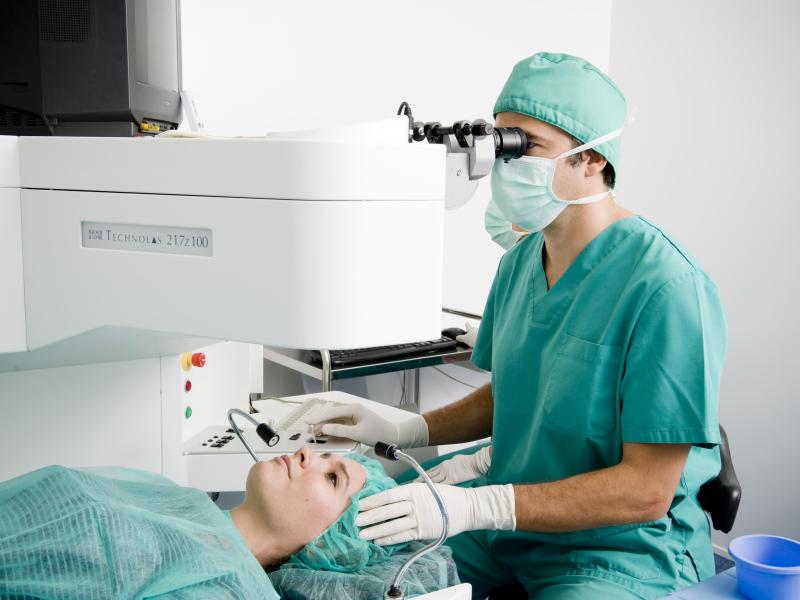Sight is one of the most important senses for human beings, yet not everyone can enjoy perfect vision. As, vision disorders affect many people around the world, impacting on their quality of life. Fortunately, ophthalmology research is making enormous strides in improving vision and proposing innovative solutions to remedy the various impairments.
Two notable procedures, corneal transplantation and amniotic membrane transplant, have emerged as significant advances in vision restoration.
Exploring corneal transplant procedures for vision restoration
Positioned at the front of the eye, the cornea is a transparent surface that plays a crucial role in focusing light entering the eye. Damage or disease of the cornea can lead to visual problems such as sensitivity to light, blurred vision and even blindness. The aim of a corneal transplant is to restore clear vision by replacing a damaged cornea with a healthy one. Thanks to this procedure, the overall health and function of the eye can be restored, so pain can be reduced and vision improved. It should be noted that this type of transplant is generally carried out in cases where medication or contact lenses have failed to produce the desired results.
Corneal transplantation techniques are divided into two main categories:
Total ocular transplant: Transfixing or penetrating Keratoplasty (PK)
This is a standard ocular transplant procedure in which a whole cornea from a donor takes the place of the patient's entire diseased one. This invasive operation requires sutures to fix the cornea, and it can take several months to heal completely.
Partial grafting: lamellar or endothelial keratoplasty
The partial corneal grafting procedure mainly involves cutting away a portion of the donor cornea (graft), usually healthy endothelial cells, to replace the damaged lamellar portion. The aim of all types of lamellar graft is to treat endothelial tissue disorders for total visual rehabilitation.
Descemet's Stripping Automated Endothelial Keratoplasty (DSAEK)
DSAEK is less invasive than total keratoplasty. Only the endothelium, the innermost layer of the cornea, is replaced by a thin layer of donor tissue during DSAEK. Using an air bubble, the donor tissue is attached to the back of the patient's cornea, while retaining the natural cornea.
Descemet's membrane endothelial keratoplasty (DMEK)
This is the most advanced type of corneal transplant surgery. The only difference between DSAEK and DMEK is that the latter purely replaces the endothelium, without transplanting the corneal stroma. Comparing this surgery with the other two types of corneal graft, we can consider that this keratoplasty type :
- Uses the thinnest corneal graft
- Is less risky
- Requires a shorter recovery period
Amniotic Membrane Transplant (AMT)
Amniotic membrane transplant or grafting have emerged as a promising avenue for vision restoration, offering an alternative to corneal transplant procedures. This innovative technique involves transplanting an amniotic membrane, obtained from the innermost layer of the placenta, onto the ocular surface.
This membrane has unique properties that make it an ideal grafting material. Hence, it has anti-inflammatory effects and promotes the formation of a new epithelium (re-epithelialization). Indeed, thanks to its regenerative effect, it helps corneal wounds to heal rapidly.
It also provides natural support for cell migration and proliferation, while reducing discomfort and post-operative complications. Among other benefits, studies have shown that AMT can effectively treat several ocular surface disorders, including:
- Chemical burns.
- Persistent epithelial defects.
- Corneal ulcers that do not respond to conventional medical treatment.
- Adhesions and infections of the conjunctiva.
Corneal vs amniotic membrane graft: Future researches in Turkey
Vision restoration procedures have advanced significantly due to two promising methods of ocular repair: corneal transplants and amniotic membrane grafts. This progress is due to the unique and beneficial properties of these types of grafts.
For the future, researches in Turkey aim to further refine these procedures, improve results and extend their applicability. Consequently, scientists and ophthalmologists in Turkey continue to explore innovative techniques such as tissue engineering and regenerative medicine. Thanks to these methods, they have succeeded in developing artificial corneas and improving the therapeutic potential of amniotic membrane transplantation.






